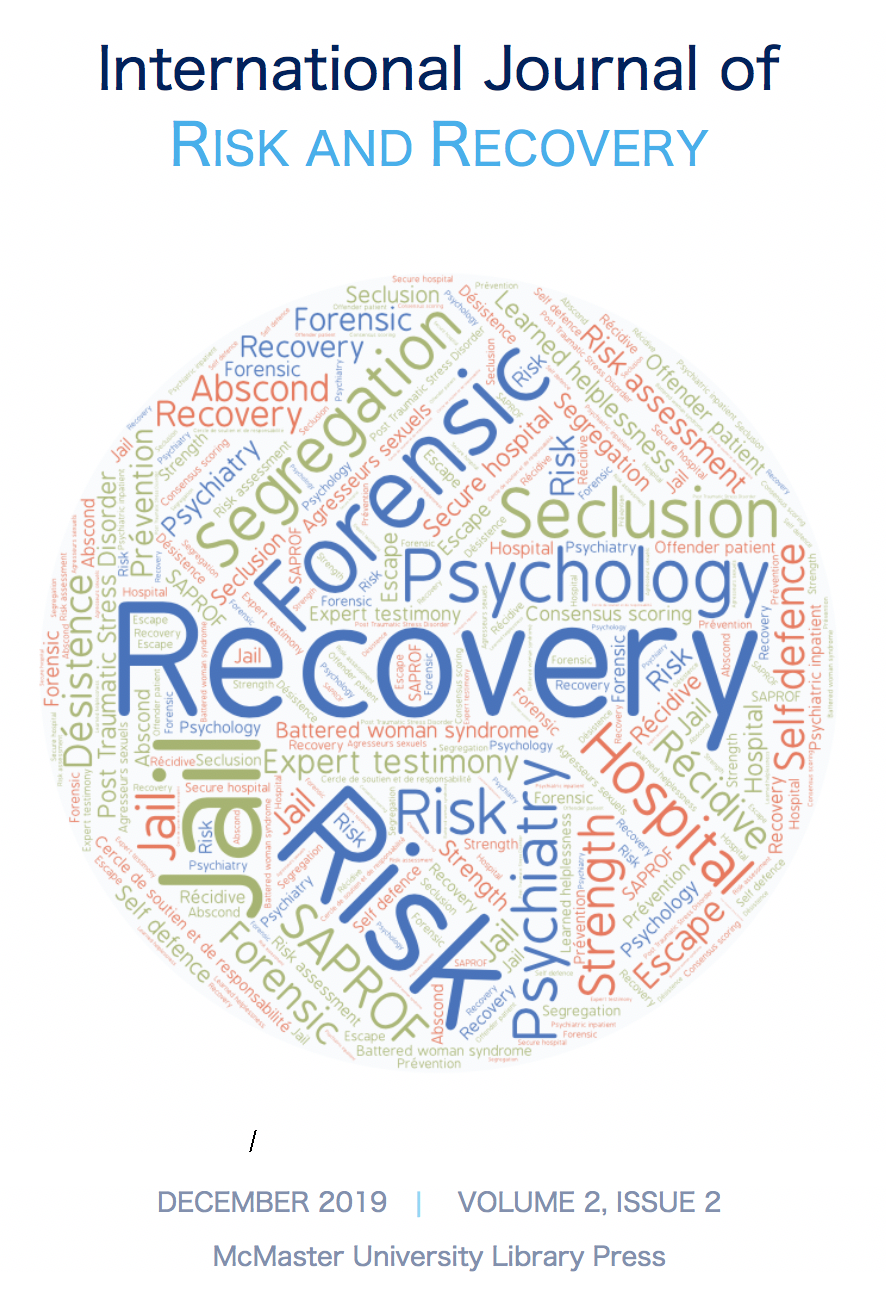Battered woman syndrome
Updating the expert checklist
DOI :
https://doi.org/10.15173/ijrr.v2i2.3820Mots-clés :
Battered woman syndrome, Learned helplessness, Post-traumatic stress disorder, Self-defence, Expert testimonyRésumé
The aim of this article is to examine the current state of the battered woman syndrome (BWS) defence in Canada and propose an update to the list of factors considered by experts evaluating the applicability of the defence to individual cases. The history and current legal definition of the defence are presented, and theories relating to BWS are summarized. Factors required of expert testimony in BWS cases are presented; cases relevant to the development of the defence that highlight these assessment factors are discussed. In a subsequent section, limitations of the defence and the role of the expert are explored. The PTSD Checklist (used in clinician diagnosis) is summarized before an updated, BWS-specific expert checklist is proposed. The updated checklist proposes six elements to be considered by an expert assessing a BWS case: 1. environmental factors, 2. attempts to leave or alter the situation, 3. risk factors of the abuser, 4. risk factors of the victim, 5. triggers for violence, and 6. contrary evidence. It is hoped that using this checklist will help experts to cover all the essential elements they must consider in order to conclude that a woman satisfies the criteria for BWS. In particular, this updated checklist will help experts to prepare comprehensive testimony that addresses the five issues defined by Justice Wilson as the expert’s duty to assess. In addition, this checklist will help experts present a firm foundation for a defence regarding the critical question of why the night of the offence was different from all other nights.
Références
Criminal Code, 1892, SC 1892, c 29 (accessed on September 26, 2019)
RSC, 1985, c C-46, s. 34(1) (accessed on September 26, 2019)
Blackstone W. Commentaries on the law of England. Oxford, England: Clarendon Press, 2nd Ed, 1775: 184
Dubinsky K. Maidenly girls or designing women: the crime of seduction in turn-of-the-century Ontario. In: Iacovetta F, Valverde M (Eds). Gender conflict: new essays in wom-en’s history. Toronto, Canada: University of Toronto Press, 1992: 27-58
Walker LE. The battered woman. New York, NY: Harper & Row, 1980
Ewing CP. Battered women who kill: psycho-logical self-defense as legal justification. Lex-ington, MA: Lexington Books, 1987
R. v Lavallee, 1990 1 S.C.R. 852 (accessed on September 26, 2019)
R. v. Cinous, 2002 2 SCR 3, 2002 SCC 29 (accessed on September 26, 2019)
Sheehy EA. Defending battered women on trial: lessons from the transcripts. Vancouver, Canada: UBC Press, 2013
R. v. Irwin, 1994 CanLII 486 (BC CA) (accessed on September 26, 2019)
R. v Z.K. 2012 ABPC 169 (accessed on Sep-tember 26, 2019)
R. v. N.N.E., 1993 CanLII 7265 (AB QB) (accessed on September 26, 2019)
R. v Knott 2014 MBQB 72 (accessed on September 26, 2019)
R. v. Malott, 1996 CanLII 2230 (ON CA) (accessed on September 26, 2019)
R. v. Charlebois, 2000 2 SCR 674, 2000 SCC 53 (accessed on September 26, 2019)
R. v. M. L. B., 2004 SKPC 136 (accessed on September 26, 2019)
R. v. Currie, 2002 CanLII 44973 (ON CA) (accessed on September 26, 2019)
Citizen’s Arrest and Self-Defence Act S.C. 2012, c. 9 (accessed on September 26, 2019)
Regehr C, Glancy G. Battered woman syn-drome defense in Canadian courts. Can J Psychiatry 1995;40(3):130-135
Sheehy EA, Stubbs J, Tolmie J. Defending battered women on trial: the battered woman syndrome and its limitations. Crim Law Rev 1992;16(6):369-394
Schneider EM. Describing and changing: Women's self-defense work and the problem of expert testimony on battering. Women's Rts. L. Rep. 1986;9(3-4):207
Schuller RA, Wells E, Rzepa S, Klippenstine MA. Rethinking battered woman syndrome evidence: The impact of alternative forms of expert testimony on mock jurors' decisions. Can J Behav Sci 2004;36(2):127
Dutton MA. Understanding women's re-sponses to domestic violence: a redefinition of battered woman syndrome. Hofstra Law Rev 1993;21(4):2
Martinson D, MacCrimmon M, Grant I, Boyle C. A forum on Lavallee v. R: Women and self-defence. U. Brit. Colum. L. Rev. 1992;25:23
Kasian M, Spanos NP, Terrance CA, Peebles S. Battered women who kill. Law Human Be-hav 1993;17(3):289-312
Herman JL. Complex PTSD: A syndrome in survivors of prolonged and repeated trauma. J Trauma Stress 1992;5(3):377-391
Glancy GD, Ash P, Bath EPJ, Buchanan A, Fedoroff P, Frierson RL et al. APPL practice guideline for the forensic assessment. J Am Acad Psychiatry Law 2015;43(2):263
Ruggiero KJ, Del Ben K, Scotti JR, Rabalais AE. Psychometric properties of the PTSD checklist—civilian version. J Trauma Stress 2003;16(5):495-502
Téléchargements
Publié-e
Comment citer
Numéro
Rubrique
Licence
Copyright Notice
Authors who publish with this journal agree to the following terms:
- Authors retain copyright of their work and grant the International Journal of Risk and Recovery the right of first publication with the work simultaneously licensed under a Creative Commons Attribution License. This allows others to share the work with an acknowledgement of the work’s authorship and initial publication in this journal.
- Authors are able to enter into separate, additional contractual arrangements for the non-exclusive distribution of the journal’s published version of the work (e.g., post it to an institutional repository or publish it in a book) with an acknowledgement of its initial publication in this journal.
- Authors are permitted and encouraged to post their work online (e.g., in institutional repositories or on their websites) before and during the submission process as it can lead to productive exchanges, as well as earlier and greater citation of published work. (See The Effect of Open Access.)

